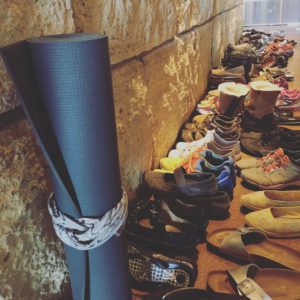For many of us, buying new pencils, pumpkin spiced everything, football, and warm socks mark the beginning of fall! But for teachers autumn ushers in a wellspring of environmental education themes. Three topics are especially interesting this time of year–resilience, migration, and animals we love to hate.
Perhaps our strongest instinct is for self preservation. Even in the most difficult conditions, living creatures strive to survive. Fall is a time many animals gather resources and prepare for the long winter ahead. Even though they run around like crazy, squirrels show a lot of discipline as they collect their food for winter to improve their chances of survival.
Watching the preparations squirrels and other mammals are making leads to a unit on human survival. While humans don’t gather nuts and berries to survive the winter, we do have basic needs to take care of–warm clothes, winterizing our homes, preserving food from the garden. Help your students compare how people and animals adapt to the environment. 
Migration is a lighter topic for fall. Nothing like a road trip!
As I enjoyed my morning run I noticed a Monarch butterfly fluttering along next to me. Besides their magnificent colors, Monarchs are capable of a journey that would be nearly impossible for a human without a car or airplane, flying from the northern United States and Canada to California and Mexico.
Take your class outside to appreciate the fact that the Monarch is about to embark on a perilous journey. Spark a conversation about cycles and patterns. Have students write a letter to a butterfly explaining what it can expect on its journey and wishing it well; older students can research areas the Monarchs will travel through.
Have students create a map showing the Monarchs’ route. Students can demonstrate their understanding of migratory patterns , as well as the lifecycle of the Monarch. Extend the lesson by adding migrations for different birds that fly through your area.
Especially at Halloween, there are certain animals we love to hate. We decorate our yards and homes with animals that typically scare us–spiders, bats and snakes, oh my! It’s the perfect time to get kids to talk about their fears, and the un-scary, even helpful things these animals do.

Initiate critical thinking through the book Vulture Verses: Love Poems for the Unloved by Diane Lang; it focuses on the creepy crawly animals. Lang opens conversation about the crucial role every animal plays in the environment. We don’t have to love these animals but we can respect what they do for us!
Happy Autumn!












